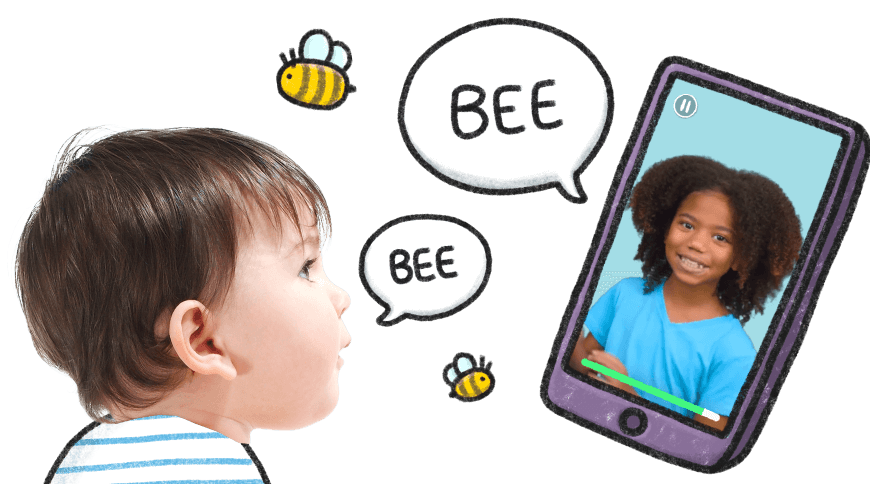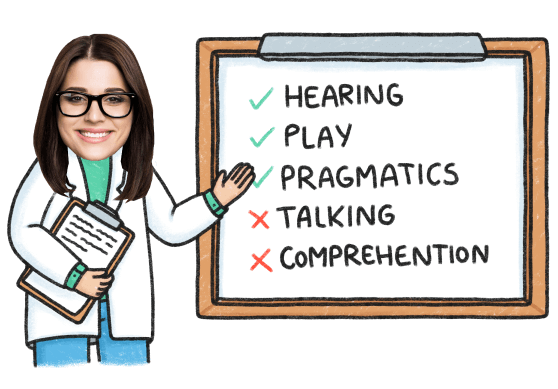4 Ways To Help A Child With Nonverbal Autism Talk
Aug 7, 2024 For a child with nonverbal autism, trying to communicate needs is difficult. This can lead to many misunderstandings and meltdowns. Although a child cannot use words to speak, it doesn’t mean he or she is lacking in intelligence.
To help a nonverbal child communicate with even simple words or phrases, early intervention is necessary. Autism spectrum disorder is complex and most children require speech and language therapy. Here are four ways to enhance speech and language development in a child with nonverbal autism at home!
1. Focus On Nonverbal Communication
This seems counterproductive for trying to encourage speech development in a child with autism. But if you enhance your own nonverbal communication, your child’s nonverbal cues will also increase. Although the goal of any parent with a nonverbal child is to get him/her talking, nonverbal communication cues will help foster speech development.
Here are some ways to model nonverbal communication to your child:
- When saying hello and goodbye, wave your hand
- To show excitement or to congratulate he/she for a job well done, clap your hands
- When asking your child a question, promote eye contact by getting to their level or raising an object to your eye level. For example: “Do you want your blue car?” Then move the blue car to your eye level to encourage your child to make eye contact.
- Point to anything and everything you are talking or asking a question about. For example: “How do you like your mac n cheese dinner?” While pointing to the mac n cheese.
- Nodding your head when saying yes
Remember, that eye contact is just as important to nonverbal communication as hand gestures. I’ve started to model nonverbal communication with my son and I’m noticing drastic improvements in his nonverbal cues. While it’s not talking and using words, nonverbal cues like pointing have reduced communication frustrations between the two of us.
2. Shorten Your Speech
Again, this may seem counterproductive, but many children with autism struggle with a lack of focus. For enhancing language, try shortening your phrases. Especially for any directions you give! If your child struggles with a limited attention span, it may be difficult for your child to follow directions when there are too many instructions.
By shortening phrases and using simpler words you can gain your child’s attention and help them learn simple words and phrases through imitating you.
Let’s look at an example of how to shorten your speech:
“Don’t stand on the chair! Please sit down on your bottom before you get hurt!”
Shorten this phrase to: “Sit down please.”
By shortening this instructional phrase you’re lessening confusion while providing clear instruction to help change behavior.

3. Imitate Behavior
Take advantage of imitating the sounds and actions of your child during playtime to encourage talking! Using imitation during play helps a child with…
- Sharing emotions
- Understanding turn taking
- Increasing attention to a caregiver
- Helps a child take an interest in a caregiver socially
But these four benefits of imitation play can be challenging for children with autism. Research studies found that imitation play with autism has a direct effect on their development. For instance, researchers determined that a child who was able to imitate gestures and body movement predicted language outcomes. Many researchers now feel imitation should be a vital part of early therapy intervention for autistic children to enhance their social ability.
So what is the best way to teach imitation?
First, follow your child’s interests. If your daughter loves dolls, then help foster imitation play with her favorite doll. Second, instruct or prompt your child to “Do this,” then imitate the action with the doll. For example: Take a doll in your hand with a doll brush and instruct her to “Do this” while showing her how to brush the doll’s hair.
Boost Your Child’s Speech Development!
Improve language & communication skills with fun learning!

Since imitation play is back and forth conversation without words, you can take imitation a step further by copying the actions and sounds of your child. I’ve begun doing this with my own son who’s nonverbal and I haven’t noticed an increase in language and speech yet, but he seems to enjoy it. If nothing else, each time I copy a babbling sound he makes he stops, makes eye contact, smiles and repeats it again.
4. Visual Tools
How do visual tools help a nonverbal child learn to talk? This was the question I had for my own son. Thankfully, a speech therapist explained to me the following benefits of using a picture exchange communication system (PECS).
A PECS system helps a child communicate wants and needs by pointing to an object to “ask” or express what he/she wants or is feeling. Because many children with autism are visual learners, a PECS system makes it easier for a child to use nonverbal communication like pointing or handing a flashcard to someone to explain what they are needing. This results in less frustration for both nonverbal children and their caregivers.
A picture system also helps nonverbal children recognize objects and the corresponding word to the object. For instance, a flashcard with a cartoon milk carton also has the word “Milk” below it. A child will learn to use the “Milk” card to ask for a drink of milk. Over time, the child will recognize the object with the word below it to say the word “Milk” as well with the use of the flashcard.
I am beginning PECS with my son shortly and have decided to make my own visual system to customize to his likes and specific needs. Although I am excited to start this journey with him, I’m also nervous because the picture system does take time to implement with a nonverbal child. Plus, my husband and I are completely on our own for starting a picture system to enhance communication since all appointments with therapists have been canceled due to the current pandemic.
Conclusion
Trying to communicate with a nonverbal autistic child can be frustrating. If the child is also lacking in demonstrating nonverbal communication like gestures, this leads to many meltdowns for children. Fortunately, there are ways to help your child learn to speak at home.
While it may seem like these four ways of fostering speech are counterproductive, they are valuable tools for parents to aid a child’s speech. Your child will not start speaking sentences overnight with these communication tips. But over time, you will start to see an enhancement in the development of your child’s speech by using imitation play, nonverbal communication, shortened words, and a picture exchange communication system.
